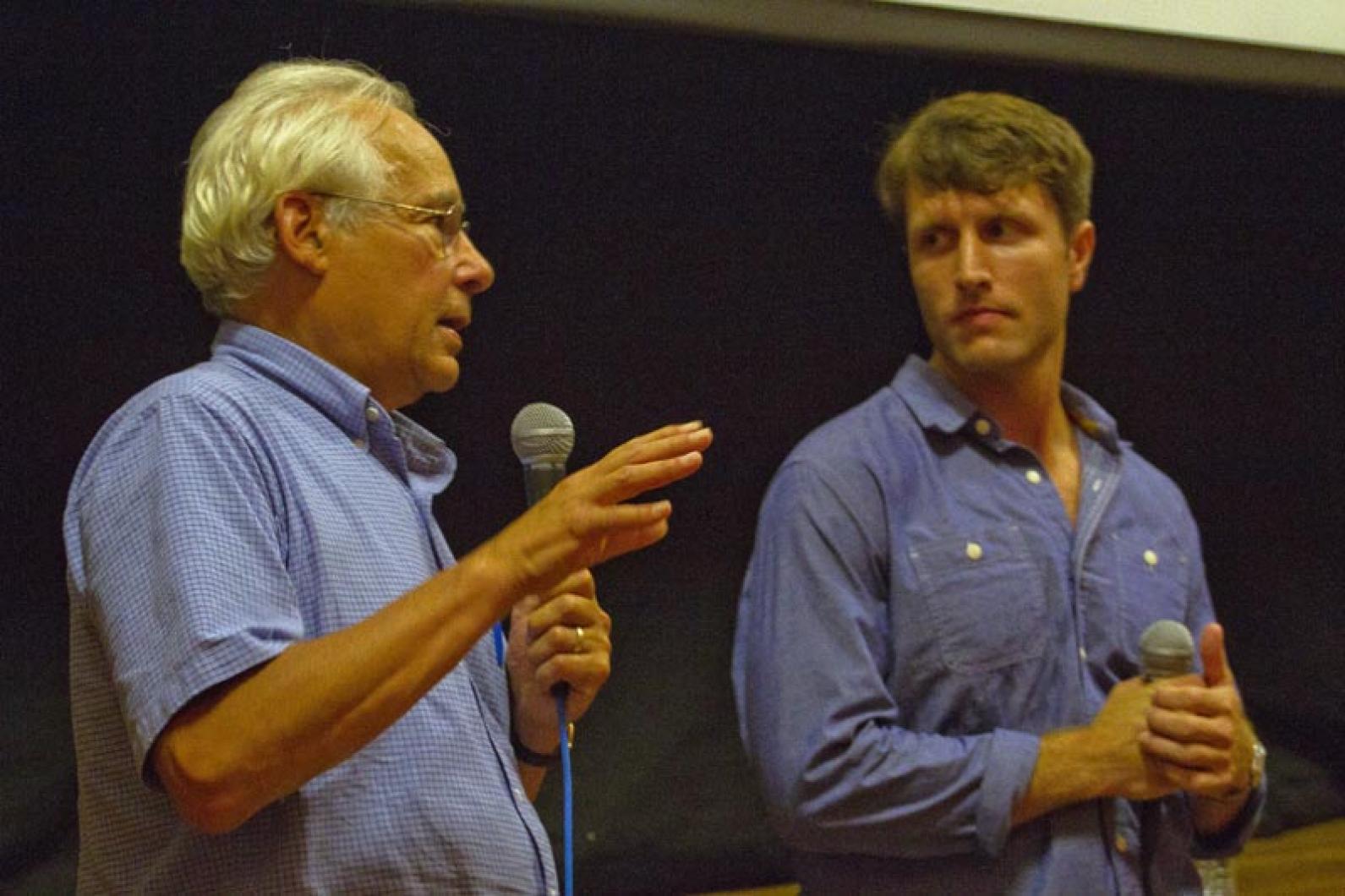We ordinarily associate fire with devastation, a barely controllable force that overtakes everything in its path. The metaphor is used throughout Matthew Heineman and Susan Froemke’s Escape Fire: The Fight to Rescue American Healthcare, which screened before a sold-out crowd of over 300 people Wednesday night at the Chilmark Community Center. The showing was followed by two lengthy discussion sessions nearly the duration of the film itself (the documentary is 95 minutes long).
But within any fire are also the seeds for regrowth and renewal. And if people are able to break free of established practices — the film’s title comes from an anecdote about a firefighter who literally built a fire to save himself from a blaze — there is also the potential for escaping what appears inevitable.
It was this take-action mood of optimism that prevailed during the discussion sessions, which featured Mr. Heineman and Dr. Donald Berwick, a former Harvard medical school professor and president and CEO of the Institute for Healthcare Improvement, who appears in the film. The duo first answered questions about the movie itself and health care on a national scale before focusing the discussion on Vineyard issues. The talk was moderated by film festival organizers Thomas Bena and Brian Ditchfield.
“We were interested in having this discussion to see what people could suggest about helping to shift [practices] in our local community,” Mr. Bena explained to the audience, as the second discussion began.
“I think there are two statistics that really struck me in making the film,” Mr. Heineman said during the talk. “The first is that 75 per cent of health care costs go to [treating] preventable diseases.” Twenty per cent of patients, nearly all with chronic diseases, take up 80 per cent of health care costs, he added.
Escape Fire, even as it paints a stark picture of the current health care system — weaving its staggering statistics around the narratives of subjects Dr. Erin Martin and Sgt. Robert Yates — spends a good portion of the film addressing solutions. Research testing — and proving — the importance of wellness and lifestyle, as well as the positive effects of alternative medicine such as acupuncture, is highlighted, as are specific hospitals such as the Cleveland Clinic in Ohio, which is physician-owned and less subject to the restrictions of federal reimbursement.
“Team-based care with a strong primary care base — that’s the hallmark of systems throughout the world, and we need to get there,” Dr. Berwick said.
Dr. Berwick said he saw the seeds of change coming from small yet concerted efforts on the local scale.
“I don’t think the designs are going to come from Washington . . . don’t hold your breath,” he said. “What I’m excited about is what I’m starting to see in some states, including our own . . . I think it’s going to come down to communities, which is a bit romantic, but possible.”
“Communities . . . it’s their money. They [should] decide on the care they want,” he continued. “You probably want what I want, which is continuity and a sense of teamwork . . . to be told to sit quietly while the system works on me is just wrong.”
He cited the example of the Nuka health care system, used by Alaska natives in Anchorage. That system has a focus on prevention, Dr. Berwick said, and is owned by the tribal corporation, allowing for much more flexibility and personalization when it comes to deciding how a health care budget is created. Since the system was adopted, hospital use has fallen 53 per cent.
“The community literally is the owner of the system, and I think that’s a very good system,” he said.
Audience members brought up the topics of alternative medicine, the role of technology in health care, and how change could be funded.
“You have to think in population terms — what does the [given] population need?” Dr. Berwick said, stressing the importance of a holistic system, not one made up of individual, disconnected pieces. Physicians, nurse practitioners, specialists, acupuncturists, chiropractors — all should be working together for a common goal.
“I do think there’s a dearth of people looking at the human being as a holistic, integrated, interconnected organism,” Mr. Heimeman said. “Disease occurs in many different aspects of life.”
“What I’ve found in the last three years of making this film is that institutions that create a culture of health and a culture of wellness succeed,” he said. In the case of Sergeant Yates, Mr. Heineman noted, it wasn’t just the medical treatments and therapies he received that helped his recovery — “It was the care, the love, the people surrounding him.”
As the session drew to a close, concern arose over how to continue the health care conversation on the Vineyard.
“There’s a huge conversation we need to have,” said Dukes County health council member Rex Jarrell. “I think we do have the human capital in this community [to succeed].”
Mr. Bena and Mr. Ditchfield said they would work to create a follow-up discussion space online where the dialogue could live on.
“I walked into this room thinking an escape fire was something you lit on a mountainside,” audience member Patrick Phillips told the group. “And now I know that an escape fire is something I light within myself . . . so we take this fire with us and we can take care of each other, and understand this conversation is something we have to keep with us.”








Comments
Comment policy »